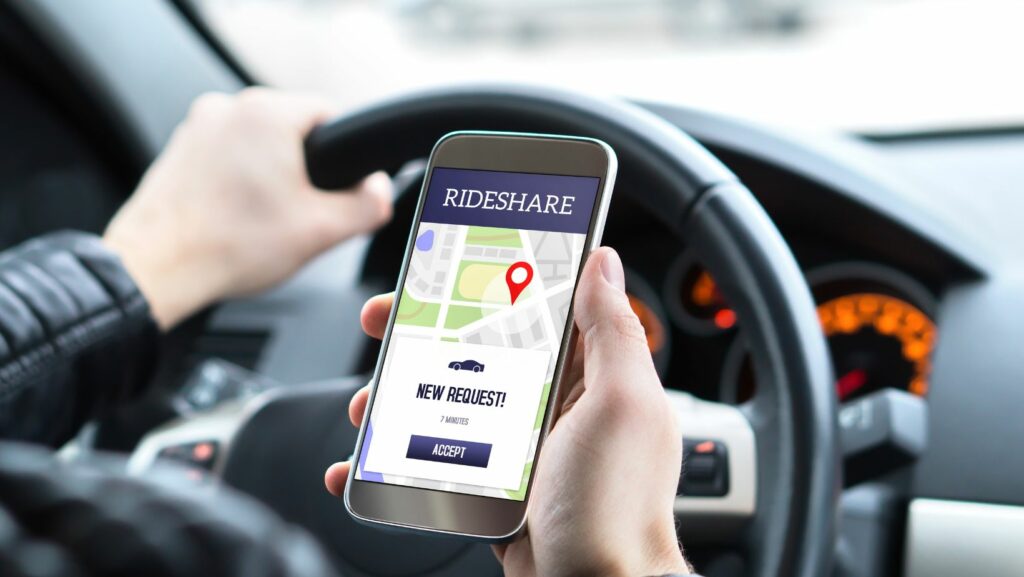In the bustling world of ride-sharing, two giants stand tall: Uber and Lyft. They’re the go-to services for anyone needing a lift, but the question remains – which is better? This article dives into the heart of the debate, comparing these two industry leaders on various pivotal aspects.
So buckle up and get ready to discover which ride-sharing service truly takes the lead.
Overview of Lyft and Uber

Lyft, established in 2012 by Logan Green and John Zimmer, emerged as a peer-to-peer transportation platform spun off from Zimride, a long-distance ride-sharing company that mainly catered to college students. Offering services mainly in the U.S., Lyft initially distinguished itself from its competitors through a trendy, friendly image, symbolized by large, fuzzy pink mustaches drivers affixed to the front of their cars.
Uber, originally named UberCab, was launched in San Francisco in 2009 by Travis Kalanick and Garrett Camp. Aimed to revolutionize transportation, Uber began as a luxury car service, offering high-end transportation options.
Lyft Or Uber Better
This section highlights significant distinctions between Lyft and Uber, two dominant ride-sharing platforms. These differences, especially in pricing models and geographic availability, provide customers with insights, enabling them to ascertain whether Lyft or Uber better suits their needs.
Pricing Models and Affordability

Lyft and Uber employ similar pricing schemas that include a base fee, a cost per mile, and a cost per minute. Pricing can fluctuate, however, based on demand; during high traffic times, Lyft’s Prime Time pricing and Uber’s Surge pricing come into effect, elevating costs significantly.
Furthermore, several studies indicate a smaller disparity in pricing between the two companies. For example, a 2018 report from Business Insider surveyed 14 major cities in the US and found Uber rides to be, on average, 10% cheaper than Lyft rides.
Geographic Availability
In aspects of geographic availability, Uber has a distinct advantage. Currently, Uber operates in over 60 countries and 800 cities worldwide, whereas Lyft is available primarily in the U.S. and has recently expanded into Canada.
For travelers or individuals residing outside the U.S. and Canada, Uber proves to be a more widespread and thus potentially more convenient service. On the other hand, for residents within the U.S., particularly in urban areas, either Lyft or Uber could potentially satisfy their transportation needs.
Analyzing User Experience

Aiding in the decision of whether Lyft or Uber is a more suitable option, let’s delve into mobile app usability. Both apps possess uncluttered interfaces, making them user-friendly. There’s a stark similarity in their design, with pickup and destination input, expected wait time, and price prior to booking.
Lyft also avoids being left behind in promoting user safety. In addition to the face mask and health clearance requirements, Lyft has added a vast array of features, including mandatory rest for drivers after 14 hours of availability.
Environmental Impact and Sustainability Efforts
Lyft’s Initiatives
Lyft, cognizant of its responsibility to regulate its environmental impact, has set in motion several green initiatives. The firm procures carbon offsets for all rides, effectively rendering their entire operation carbon neutral.
Lyft’s commitment to sustainability extends to its pledge to transition to 100% electric vehicles by 2030. This bold move, albeit risky, demonstrates the firm’s commitment to environmental friendliness and aligns with global efforts to combat climate change.
Uber’s Initiatives
On the other hand, Uber’s drive towards sustainability is evident in its own array of initiatives. Much like Lyft, Uber has committed to becoming a fully electric, emission-free platform by 2040. They have dedicated $800 million to help their drivers transition to electric vehicles and have rolled out Uber Green, a feature that enables riders to request rides in electric or hybrid cars.
Ultimately the choice comes down to personal preferences and priorities. Whether it’s cost, availability, user experience, or environmental impact, both Uber and Lyft have their strengths. Riders are encouraged to weigh these factors and make an informed decision based on their unique needs.



